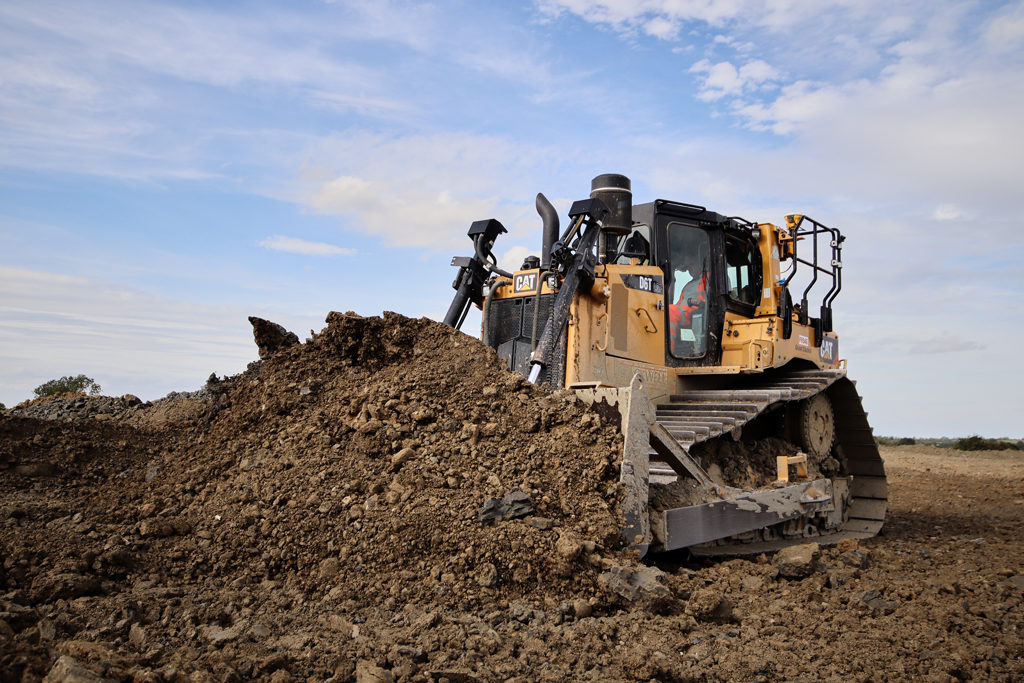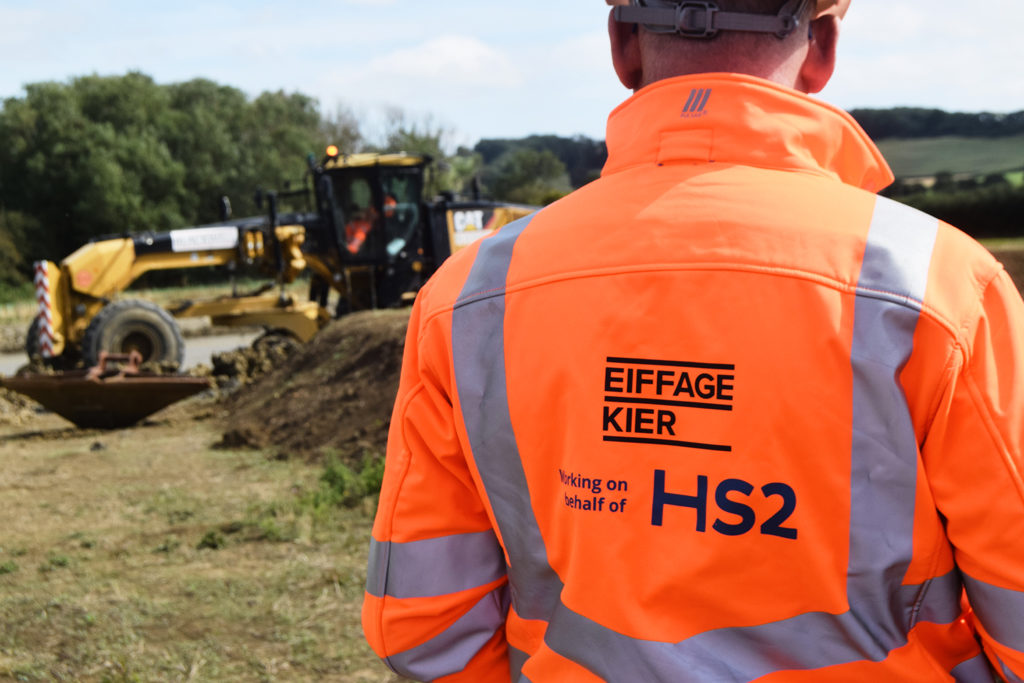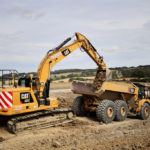Eiffage Kier and Finning have joined forces and are currently trialling new technology on a HS2 site which looks set to change the way construction sites are run. Construction Plant News’ Kieran Nee investigates.
Beyond the political wrangling, the outraged headlines and the growing suspense in the minds of the general public, real work on HS2 is underway and making strident progress. Regardless of perceived merit or the need for it, constructing a high speed rail network that connects eight of Britain’s ten largest cities and their regions presents a huge logistical challenge. It also represents a chance for modern construction companies to collaborate and show how efficiently things can be done compared to the days of old.
In charge of 80km of the project is Eiffage Kier, a joint venture between the two eponymous civil engineering and construction companies. The new firm is responsible for the area between the Chiltern Tunnel and Long Itchington Wood, which includes 17 viaducts, 7km of green tunnels, 22km of road diversions, 75 overbridges and 32 million cubic metres of excavation. To handle the complexity of this task, and to facilitate future operations, Eiffage Kier has been busy quietly testing new technology and methods of project management at a site near Southam.

Known as the Heave Monitoring Site, the site’s purpose is ostensibly to monitor ground heave as the dig progresses. Indeed, not since Victorian times has so much earth been excavated in the UK and they lacked the technology to properly measure the effects on the ground’s surface.
In order to efficiently test the levels of heave, Eiffage Kier has enlisted the help of Finning UK and Ireland. Together, they have come up with a system which accounts for the total earthmoving project. On the face of it, earthmoving is a relatively simple operation, but dial up to the volumes needed for HS2 and a poorly managed earthmoving programme can quickly eat up time and profits. The approach is to move material once, to move it the shortest distance possible, utilising the minimum amount of resource to do so and maximising the re-use of excavated material.
The fruits of this labour have been concentrated on the DIGital Graphical Earthworks Reporting system, or ‘DIGGER’ as it’s known for short. From the original concept, Eiffage Kier and Finning have worked together in the trial, testing and ongoing development of the digitally integrated earthworks platform.
This platform is built with Finning’s analytics and insights software, my.finning.com and its Performance Solution services. A number of different elements make up the digital concept, including technology solutions from CAT, Trimble and SITECH, as well as Finning’s core equipment and R&M managed services.
Accessible Data
The vision is to create a new platform to house all the data in one solution and be deployable across future HS2 and other civil engineering works. Accessible from the cloud, it allows Eiffage Kier, HS2 and sub-contractor Blackwell to access a complete view of everything that happens on site in real-time through a ‘single pane of glass.’
The solution supports easy sign-on by users across multiple systems, allowing access to the right information, at the right time, tailored to the right audience. The tool helps support access to complex data across programme structures that are also often complex. This removes an element of manual intervention traditionally performed by the IT department. This in turn removes the potential for human error and allows people to work on more value-adding activity.
 The all-encompassing nature of the system is what sets it apart from those that have come before. With hundreds of pieces of plant set to be used on each of the Eiffage Kier HS2 sections, Finning designed the system to be compatible with data outputs from a full range of OEM equipment.
The all-encompassing nature of the system is what sets it apart from those that have come before. With hundreds of pieces of plant set to be used on each of the Eiffage Kier HS2 sections, Finning designed the system to be compatible with data outputs from a full range of OEM equipment.
The quality of the material extracted from the ground, whether it’s contaminated, what consistency it is and where it ends up have been hot issues within the construction industry for a while now. With everybody looking to remain on the right side of the law, moving earth can be a little like passing a hot potato around at times. An important aspect of the DIGGER system is the ability to track each load of material leaving and entering site, thus creating a paper trail and, hopefully, eliminating any potentially hazardous mistakes.
In order to do this, Finning adopted the Trimble Loadrite solution, which uses an in-cab touch button control to identify the type of material the operator is loading. This data is then matched with the GPS location of the truck being loaded. The load is then followed along the haul road until the material is dumped, obtaining a location reference for each load. With each truck and excavator also having on-board payload monitoring, the exact volume of earth moved is calculated automatically.
3D Modelling
The whole of the monitoring site has been modelled in 3D, using Trimble Business Center software and Stratus Drone surveying platform as well as site positioning systems. This single model feeds directly into the digital earthworks tool and is used to provide all the information required by the machine-controlled excavators and dozers on site.
This gives Eiffage Kier and Blackwell ‘as built’ data at the end of each day. To support the digital visualisation and mapping of the project, Finning are also conducting weekly drone flights, collecting point cloud data to 30mm survey accuracy for the site model, with photography also supporting its progress timeline and traditional surveying practices integral to the site’s operational plan.

Ian Stewart, General Manager Performance Solutions, Finning, explained: “The challenge for us originally was getting people to understand that we could automate a lot of this, and how we could use technology to change people’s processes. The heave monitoring site has been great at building people’s confidence that we can replace some of the traditional ways of working and showing that the system will actually deliver on what it promises.”
“The change at one extreme can be transformational, but at the other end it could be small, and far more mundane. But it could be that change that is the breakthrough. A lot of this, the data, the systems and the insights, it’s not necessarily about totally ripping up the rulebook and starting again. It’s about how you use that data and insight to make everything more efficient, that’s what’s important,” he concluded. In terms of transformational changes to the construction industry at large, time will tell whether DIGGER has the answers.









